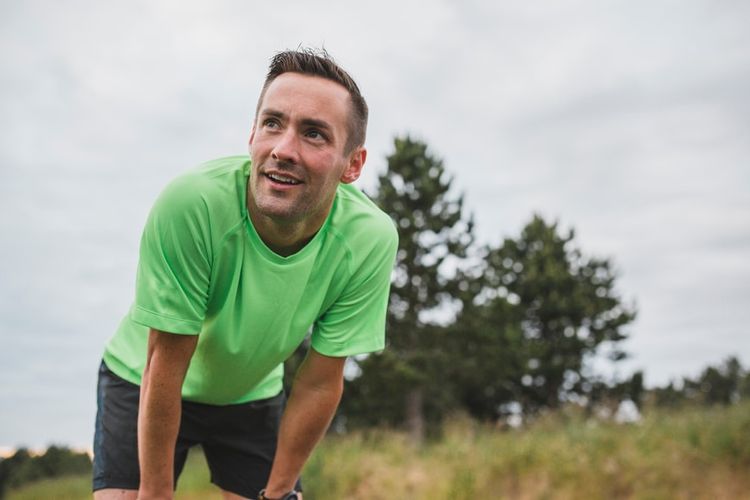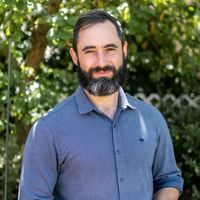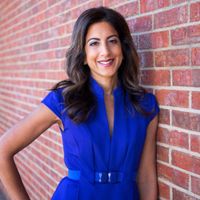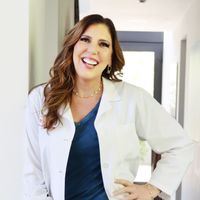What is Osteopathic Medicine?
Osteopathic medicine or osteopathy is a distinct form of Western medicine and the fastest growing form of medicine in the United States. Doctors of osteopathic medicine (DOs or osteopaths) are fully licensed physicians, and practice all types of medicine and surgery. However, osteopathic training emphasizes the idea that the body operates as a connected whole, rather than a collection of separate organs, bones, muscles, and tissues. In other words, DOs are taught to look at healing holistically.
Dr. Ellie Campbell, DO, says that osteopathic physicians treat patients from the perspective that, "our bodies have the capacity to heal from within if we can take away what's interfering."
Founded over a century ago, osteopathic medicine is widely practiced today. The first osteopaths were frustrated with the limitations of 19th-century medicine, which they saw as frequently harmful to the patient. Osteopathic medicine was created with the goal of helping the body's innate healing ability, rather than fighting against it. Today, most DOs are primary care doctors, working with their patients to treat and heal injury and disease and promote wellness.
Osteopathic manipulative therapy
One practice that distinguishes osteopathic medicine from other primary care disciplines such as allopathic (MDs) or naturopathic (NDs) medicine is osteopathic manipulative therapy (OMT). Also called osteopathic manipulative treatment or osteopathic manipulative medicine (OMM), OMT is a family of techniques that is unique to osteopathy, in which a DO will use their hands to apply gentle pressure on your bones, muscles, and joints. While most well-known as a way to treat pain, OMT can be used to diagnose and treat many health problems, as well as prevent them from occurring in the first place.
Dr. Jeffrey Haggquist, DO, notes that "Osteopathic physicians are uniquely trained and qualified to look at the musculoskeletal system and how that contributes to health and disease. Many of us have been trained and pursued extra training - in how the musculoskeletal system figures into both the general health any specific malaise the person may suffer from. We learn how to both diagnose and treat. We provide patients with a lot of relief."
In other words, OMT and the osteopathic tradition of working with the musculoskeletal system help osteopaths understand how all the pieces of the body fit together as a whole. That holistic mentality informs their treatment of any particular ailment or condition. However, while all DOs learn OMT in medical school, only some use it as a regular part of their practice.
How does osteopathic medicine work?
In most ways, osteopathic medicine is similar to standard Western medicine. A DO is essentially the same as an MD. However, osteopathy's history and traditions also mean osteopaths have a unique perspective on healing.
History and philosophy
Osteopathy was founded in the late 19th century by Andrew Taylor Still, MD, a surgeon who had served with the Union Army during the Civil War. Dr. Still's experience treating his patients had left him frustrated with the standard treatment techniques of the day. He found much of the medicine of his time not just ineffective, but counterproductive - often more likely to harm the patient than to help.
After years of study and observation, Dr. Still came to believe in what we today call a holistic philosophy of medicine. In other words, he began to see the whole body as interconnected - not just a series of separate organs like the heart and the lungs, but as one complete system all functioning in harmony. Similar to naturopaths, Dr. Still also recognized that the natural state of the body is wellness and that medicine should focus on supporting the body's own natural healing mechanisms, preventing illness, and healing the patient as a whole, not just on counteracting any presenting symptoms or diseases.
In particular, Dr. Still believed that properly supporting the musculoskeletal system (your bones, muscles, and joints), was key to achieving or maintaining wellness. His work showed him that doing so could significantly improve his patients' overall health. Dr. Still developed the system of musculoskeletal manipulation - the gentle adjustment of bones and muscles - that is now known as OMT. He also founded the first school of osteopathic medicine in 1892, in order to pass on his approach to healing.
While the osteopathic tradition has grown to embrace many other medical practices, OMT and Dr. Still's holistic perspective still remain at the heart of how osteopaths are taught. Dr. Haggquist says this means that "a DO can look at you from a gestalt - overall picture of your health - as well as granulate down to the nitty-gritty. For instance, we can evaluate and treat a neurological condition" say you have MS (Multiple Sclerosis) - not only can we treat that but the other musculoskeletal issues that can arise from that. He observes that "osteopaths pay very close attention to the kinetic chain," or how a problem with one part of the body can actually cause seemingly unrelated problems elsewhere.
Science
Osteopathic medicine is grounded in evidence-based practices. Osteopathy is a school of Western medicine and generally views healing through that lens and from that clinical perspective. DOs base their treatments on the same science MDs do.
The science of OMT
OMT was developed based on the observations and hands-on treatment successes of Dr. Still, in a time before larger-scale scientific studies were done at all. However, contemporary research backs up the experience of thousands of osteopathic doctors - that OMT is useful for treating a wide range of conditions. These can include specific musculoskeletal problems like back or neck pain, muscle pain, sports injuries or problems caused by chronic repetition like carpal tunnel syndrome. One study that compared DOs and MDs treating patients with chronic low back pain found that patients who received OMT needed fewer pain medications or muscle relaxers and were less likely to need physical therapy than those who did not. OMT is also effective at treating conditions that might seem unrelated, but can actually be the result of musculoskeletal stress, like migraines - e.g., tight neck muscles can precipitate tension headaches that transition into migraines. Osteopaths can relieve the neck tension (the root of the problem) before it becomes a migraine.
OMT has also been found to impact the autonomic nervous system, which controls the body's stress response. In brief, OMT can help the body to deactivate the stress-inducing sympathetic nervous system, and active the calming parasympathetic nervous system. The sympathetic nervous system, or what is commonly known as the fight, flight or freeze response, turns on when you think that you're in danger. Unfortunately, it can end up stuck 'on', leaving you constantly feeling threatened and overwhelmed by your daily lives. OMT can ground you and bring you back into balance by switching on the complementary parasympathetic nervous system, which tells your body that everything is safe and it's okay to relax.
OMT affects the sympathetic and parasympathetic nervous systems in a manner similar to techniques such as acupuncture, chiropractic or yoga, as well as talk therapy or meditation. Like these other modalities, an OMT session can help bring your body out of a frantic, stressful state and into a more peaceful one. For this sort of work, the effects tend to be cumulative, with each session building on the previous.
Method
DOs typically use the same treatments that an MD would. However, Dr. Haggquist notes that because of osteopaths additional training in OMT and the musculoskeletal system, DOs are able to "treat many conditions from a non-surgical, conservative standpoint, such as headaches, back pain, joint pain, or trigger points that might be creating nagging pain between the shoulder blades..." This means DOs have a lot of options that can help their patients avoid the pitfalls of unnecessarily aggressive treatments.
How is OMT practiced?
OMT is a hands-on treatment approach. This means a DO practicing OMT will place his or her hands on areas of a patient's body in order to treat injury or illness. OMT can also be used to diagnose health conditions prior to treatment.
However, while all DOs are trained in OMT, many do not incorporate OMT into their medical practice. DOs who are primary care doctors are more likely to practice OMT than specialists. If you are interested in receiving OMT, be sure to ask if the DO you are planning to see uses it.
There are dozens of individual techniques that make up the overall practice of OMT. These can range from a gentle healing touch to more forceful, targeted applications of pressure to areas of a patient's body, including the spine, muscles, soft tissue or skull. Specific techniques include:
- HVLA or thrust technique: applying a short, quick thrust of pressure to joints to improve range of movement.
- Myofascial release: working with tension held in the fascia, layers of connective tissue underneath your skin that connect most of your body.
- Soft tissue: applying pressure on or stretching muscles (especially around the spine)
- Cranial manipulative medicine: light pressure to parts of the skull
- Muscle energy: a DO applies pressure in one direction and instructs the patient to push against that pressure.
The benefits of osteopathy: what can osteopathic medicine treat?
DOs are frontline medical doctors who can treat virtually any health condition. This can include injury, disease, and wellness maintenance. Most DOs are primary care physicians, however, some work in particular specialties like surgery, oncology or obstetrics.
Dr Campbell says that osteopathic physicians are often particularly good at treating "musculoskeletal injuries and low back pain, and are much less likely to use drugs to help." She also notes that DOs are, 'good at working with chronic disease across the board. DOs treat from a holistic perspective that includes nutrition, body mind and spirit. So often, our patients are affected by lifestyle factors like stress and lack of vibrant nutrition from quality food. DOs respect that and have better outcomes with chronic disease."
In other words, osteopathic medicine's holistic perspective, which comes from Dr. Still's early emphasis on the importance of seeing the body as more than just a collection of pieces, also means that a DO understands the importance of evaluating and treating you as a whole person, not a series of presenting symptoms. Osteopaths want to figure out what's causing the problem, not just how to make the immediate symptoms go away, and their training can help them to put the pieces of that puzzle together.
What can OMT treat?
OMT is well-suited to treating a variety of conditions, especially those involving any sort of misalignment, tension, stress-related or structural problems in the body. These include, but are not limited to:
Back pain
OMT is a classic treatment for acute and chronic back pain. DOs have relied on this approach for over a century. Numerous studies have found OMT to be effective at relieving pain levels, while reducing the need for additional pain relief methods.
Neck pain
OMT also works on pain higher up the spine. DOs frequently use OMT to treat neck pain in their patients, as well as back pain. OMT is often more successful than commonly-used nonsteroidal anti-inflammatory medications (NSAIDS) at relieving neck pain.
Depression
While it may seem to be only a physical wellness technique, OMT can help with mental and emotional health issues like depression. A recent study found that OMT was an effective complementary therapy for depression. Participants receiving OMT in conjunction with traditional depression treatments experienced more positive outcomes than those receiving traditional treatments alone.
Stress and anxiety
Because OMT activates the body's calming parasympathetic nervous system, it can be useful for reducing feelings of stress and anxiety. DOs have traditionally used OMT to help their patients relax, which can have significant emotional, as well as physical health benefits. Increasingly, this approach is supported by clinical trials: one study of first-year medical students, who typically experience a great deal of stress and stress-related conditions, found that OMT helped to reduce their feelings of fatigue and anxiety.
Migraines
As referenced earlier, stress is also a common causal factor in migraines. OMT has been found to be a useful complementary treatment for migraines, likely because of its ability to help the body de-stress and relax,. OMT is also effective for relieving tension-related headaches.
Digestive issues
Digestive problems, like constipation, reflux or nausea, can be helped by OMT. By working to relax the fascia tissue, as well as relieve structural tensions, an OMT session can help the digestive system as a whole to work more smoothly. This may help clear up specific digestive concerns.
Side effects and safety
Osteopathic medicine carries the standard risks of western medicine. Most prescription medications have side effects, as does any surgical procedure. OMT can also have certain side effects: soreness and headaches are the most common, although other issues can arise, depending on the specific technique used.
The following experts reviewed and contributed to this article:
Jeffrey Haggquist, DO, Osteopathic Physician
Ellie Campbell, DO, Osteopathic Physician
References:
Empowering women one patient at a time, the osteopathic way
American Osteopathic Association
Empowering patients: The osteopathic approach to type 2 diabetes
American Osteopathic Association
Selected Studies:
A Comparison of Osteopathic Spinal Manipulation with Standard Care for Patients with Low Back Pain.
Andersson, Gunnar, et al.
New England Journal of Medicine
Osteopathic manipulative treatment and its relationship to autonomic nervous system activity as demonstrated by heart rate variability: a repeated measures study.
Henley, Charles E, et al.
Osteopathic Medicine and Primary Care
Osteopathic Manipulative Treatment for Self-Reported Fatigue, Stress, and Depression in First-Year Osteopathic Medical Students
Wiegand, Sarah et al.
Journal of the American Osteopath Association








